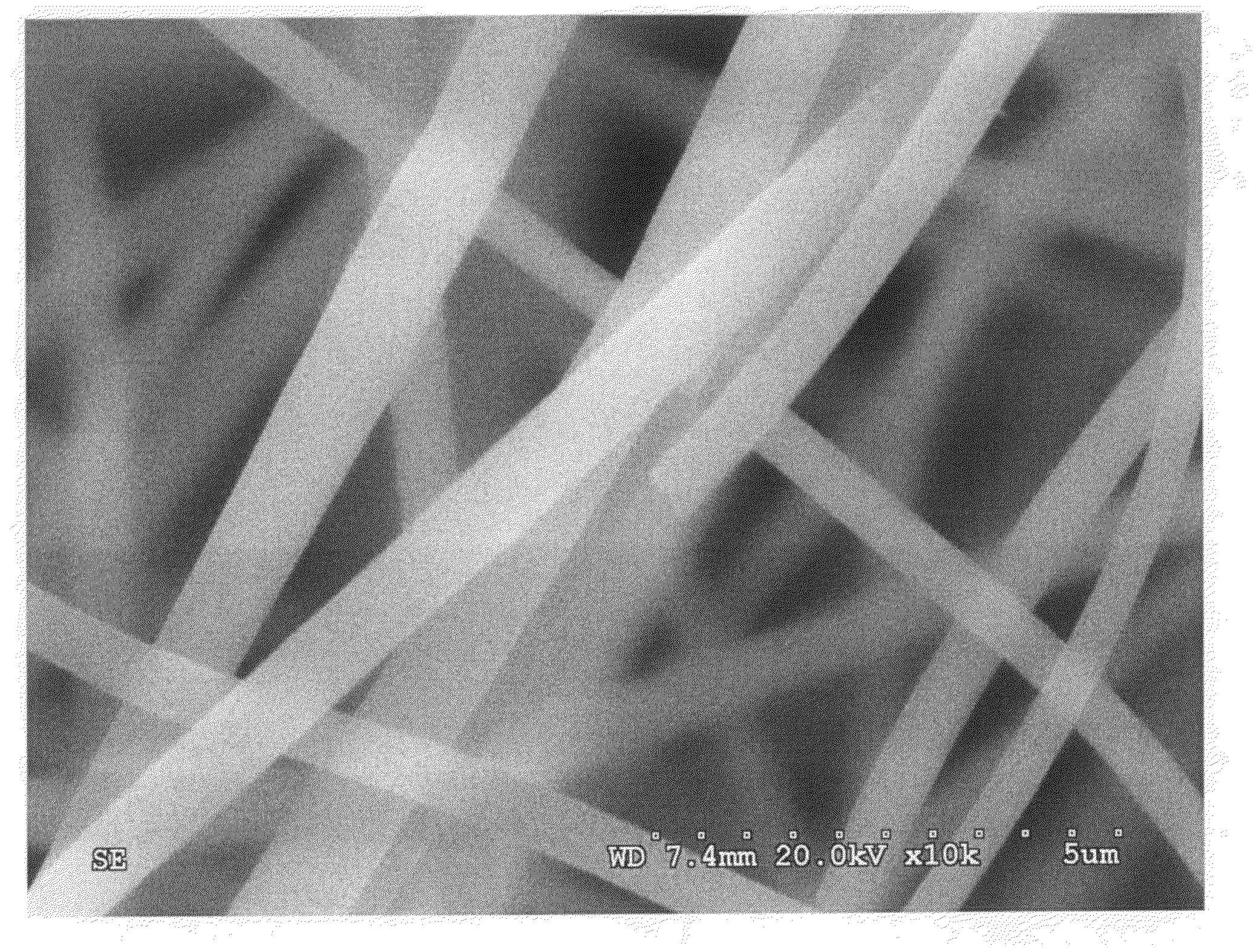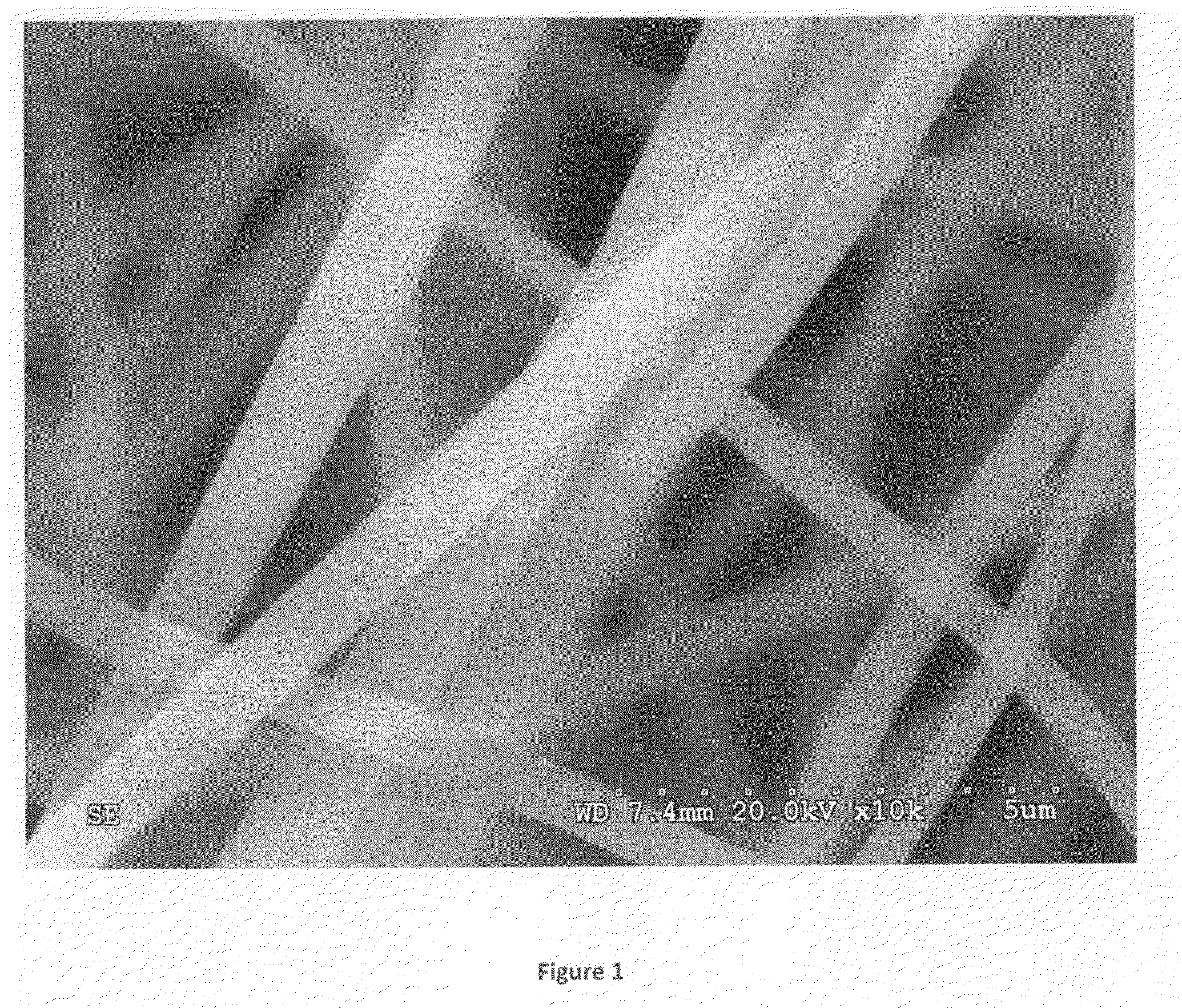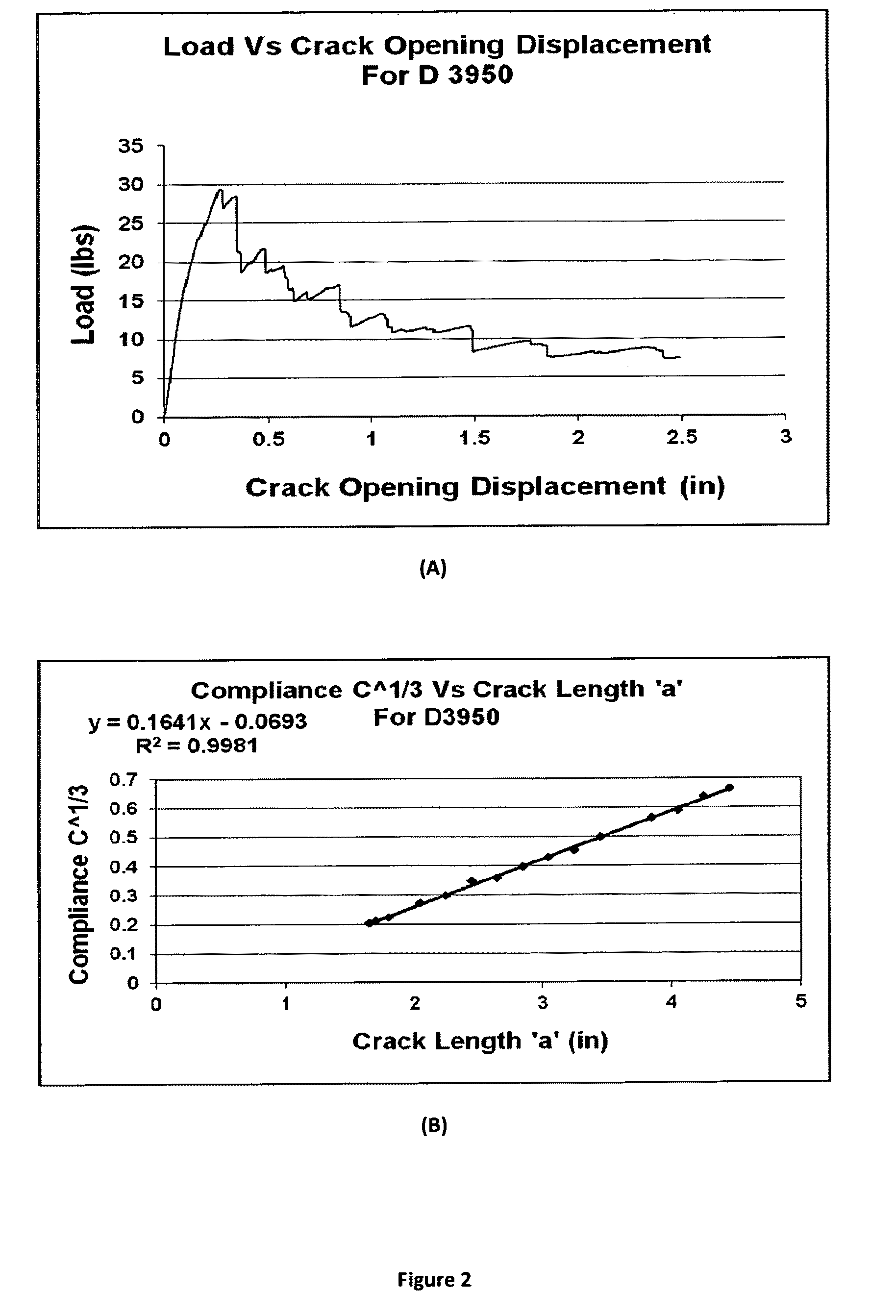Electrospun NANO fabric for improving impact resistance and interlaminar strength
a nano-fiber and interlaminar strength technology, applied in the field of composite material manufacturing methods, can solve the problems of reducing the tensile and compression strength, reducing the in-plane properties, and the delamination of the fiber layer is a common failure mechanism of woven fiber composites, and achieve the effect of improving the interlaminar properties
- Summary
- Abstract
- Description
- Claims
- Application Information
AI Technical Summary
Benefits of technology
Problems solved by technology
Method used
Image
Examples
example
[0038]Mechanical properties of fibers show marked improvement with reduction in diameter, hence development of a continuous nanoscale one-dimensional nanodiameter fiber structure is important. The Drawing, Template Synthesis, Phase Separation, Self assembly methods useful for developing 1-D nanostructures have their own limitations [3]. In contrast, electrospinning is a process that can be employed to produce uniform diameter fibers in random as well as organized fashion with multitudes of configurations in the form of contents and assemblies depending upon the starting material. For the past decade, electrospinning has become a convenient process to produce uniform diameter nanofibers on a mass scale from a variety of polymers, ceramics and their composites. Electrospinning has attracted research focus because of the simplicity, versatility and mass scale nature of the process. Numerous polymers, mainly in dissolved form and some in melt form have been successfull...
PUM
| Property | Measurement | Unit |
|---|---|---|
| temperature | aaaaa | aaaaa |
| temperature | aaaaa | aaaaa |
| diameter | aaaaa | aaaaa |
Abstract
Description
Claims
Application Information
 Login to View More
Login to View More - R&D
- Intellectual Property
- Life Sciences
- Materials
- Tech Scout
- Unparalleled Data Quality
- Higher Quality Content
- 60% Fewer Hallucinations
Browse by: Latest US Patents, China's latest patents, Technical Efficacy Thesaurus, Application Domain, Technology Topic, Popular Technical Reports.
© 2025 PatSnap. All rights reserved.Legal|Privacy policy|Modern Slavery Act Transparency Statement|Sitemap|About US| Contact US: help@patsnap.com



